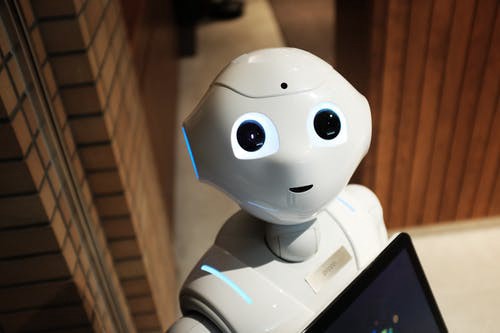Facebook rechristened as Meta and its founder Mark Zuckerberg on Wednesday unveiled an Artificial intelligence (AI) that can create different worlds in the metaverse using speech and voice commands. In a prerecorded demo, Zuckerberg showcased an AI concept called Builder Bot, where he appeared as a legless 3D avatar on an island and gave speech commands to create a beach and then add clouds, trees, and even a picnic blanket.
While Zuckerberg’s invention may have looked primitive and nothing out of the ordinary, it does give a peek into the working of AI and how it is becoming conscious by the day. As the term itself clarifies, Artificial intelligence (AI) is any kind of intelligence that is not natural to alive beings. These human beings include both humans as well as animals.
What is AI?
The mechanism of artificial intelligence is simple- AI machine watches some subjects (living beings, machines) reacting to certain situations. The machine then stores that situation and its related reaction in its memory. This memory is used to replicate the same reaction when similar kinds of situations arise in front of it in future.
An example should suffice about the working of an AI. Suppose, you are watching a YouTube video on Sachin Tendulkar’s cover drives. YouTube algorithm is storing your watch time in its memory.
Now, when you visit YouTube after an hour, videos related to Sachin Tendulkar will be on your homepage. Most likely, it will be a compilation of Sachin Tendulkar’s straight drives. This is artificial intelligence making a decision based on the past.
Read more: AI and Humanoids are taking over the world, but there are serious consequences
Alexa tells a kid to self-harm
However, learning a user’s video palette is dumbing down what an AI can do. The extent of AIs and their prowess was witnessed last year in December when Amazon’s Alexa told a 10-year-old girl to touch the live plug with a penny.
The suggestion came after the girl asked Alexa for a “challenge to do” based on a viral Tik Tok trend. “Plug in a phone charger about halfway into a wall outlet, then touch a penny to the exposed prongs,” the smart speaker said. The girl was smart to not do as told by Alexa but eyebrows were raised.
After the accident gained traction in the realms of social media, Amazon came out with a statement and said it had updated Alexa to prevent the assistant from recommending such activity in the future.
Will the AIs become sentient?
However, the question arises, why did Alexa’s AI behave in such a manner. After all, no one on the assembly line fed the AI any data to cause harm to its users. While Amazon may never release the data but it appears that the AI was learning things on its own and at a pace, much faster than the programmers had imagined.
Hollywood has actively pursued the idea of AI becoming sentient through movies and TV shows like Terminator and Black Mirror respectively. The overarching idea is that AI generally turns evil and becomes a bane for humanity. And while the larger public may not realize but we are already sharing our living space with these breathing AIs. Alexa is a case in point.
“With great power comes great responsibilities’ is a world-famous dialogue from the Spiderman franchise. However, in the case of AI and the upcoming 5G technology, the adage is slightly altered. With great speed and consciousness, comes great threats.
The dichotomy of a conscious AI
As reported by TFI previously, two researchers or “white hat hackers,” named Charlie Miller and Chris Valasek in 2015 took remote control of a Jeep Cherokee driven by Wired journalist Andy Greenberg. From a laptop computer 16km (10 miles) away, they were able to control the accelerator, brakes, air conditioning, windshield wipers, and even the radio, eventually “driving” the car into a ditch.
In 2018, a Tesla Model S became the target of researchers’ pursuit to understand the impact of 5G connectivity as well as its pitfalls. Utilizing about $600 worth of computing and radio equipment, Katholieke University researchers cloned the key fob of Tesla.
Similarly, in 2019 two security researchers, went after another Tesla and extracted personal data from Model 3. According to a CNBC report, the computers in the car revealed mobile phones and tablets had been paired over 170 times, as well as call logs, calendar entries, email addresses, and 73 navigation locations.
As the automated car market grows, the use of AI in it will increase. And thus, it will be interesting to observe how the liability laws hold up once an awakened AI decides to crash its passengers.
Read more: Is 5G connectivity for automobiles a sweet deal for India?
Is tinkering with AI and the human brain, a good idea?
Musk is also experimenting with the human consciousness by pairing it with AI through Neuralink via high-bandwidth brain implants. It is still a novice technology and people are still apprehensive about its application. More so, news reports suggested that Musk’s Neuralink experiments killed 15 out of the 23 Test monkeys.
To successfully fuse the human brain with artificial intelligence, Neuralink records and decodes electrical signals from the brain using more than 2,000 electrodes. These electrodes are implanted in regions of the monkey’s motor cortex that link hand and arm movements.
Whether one likes it or not, we are surrounded by AI. With the technology evolving at speeds, hitherto unseen, AI is bound to take over in our everyday routine. The question is, will it be conscious or still working on our voice commands?
